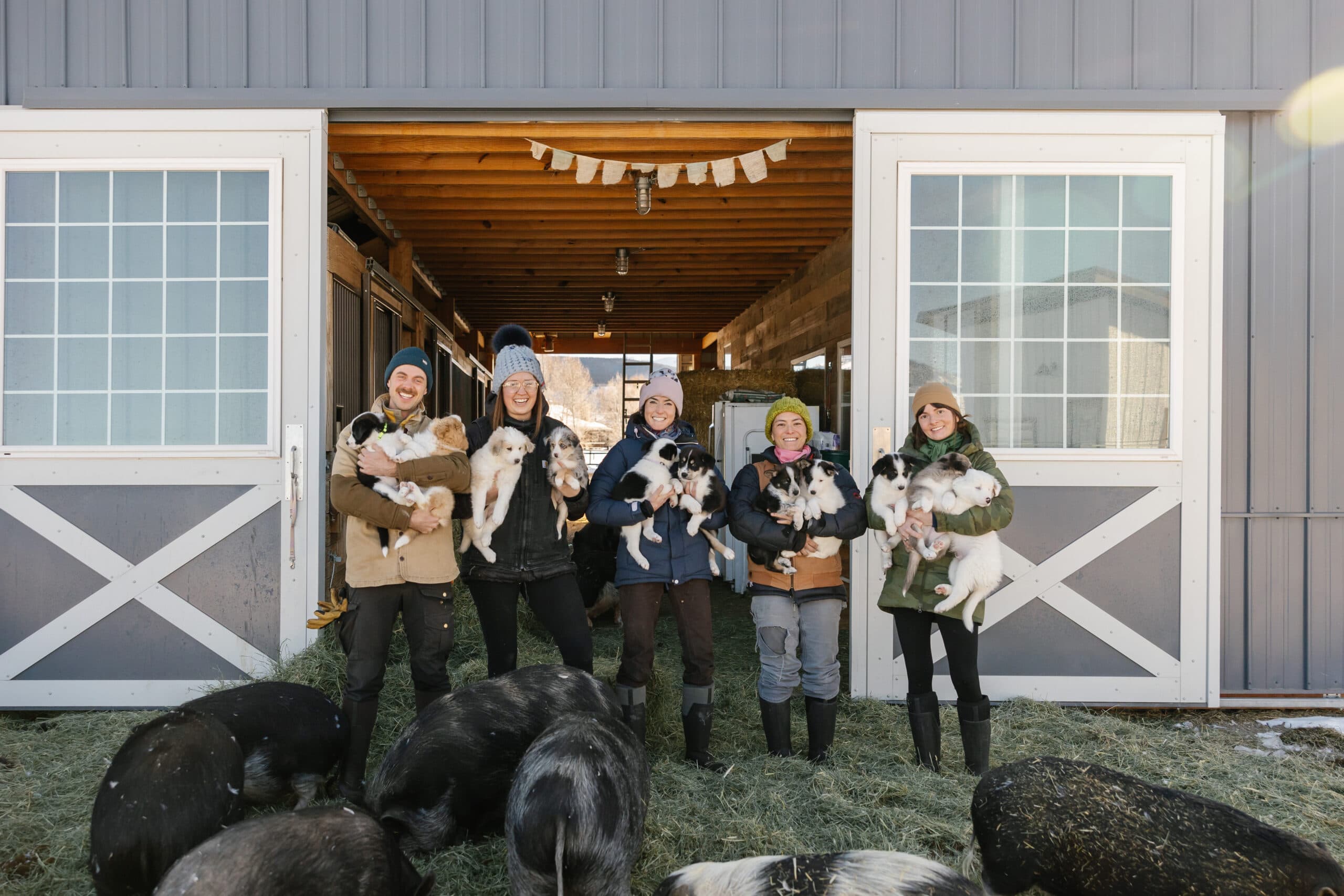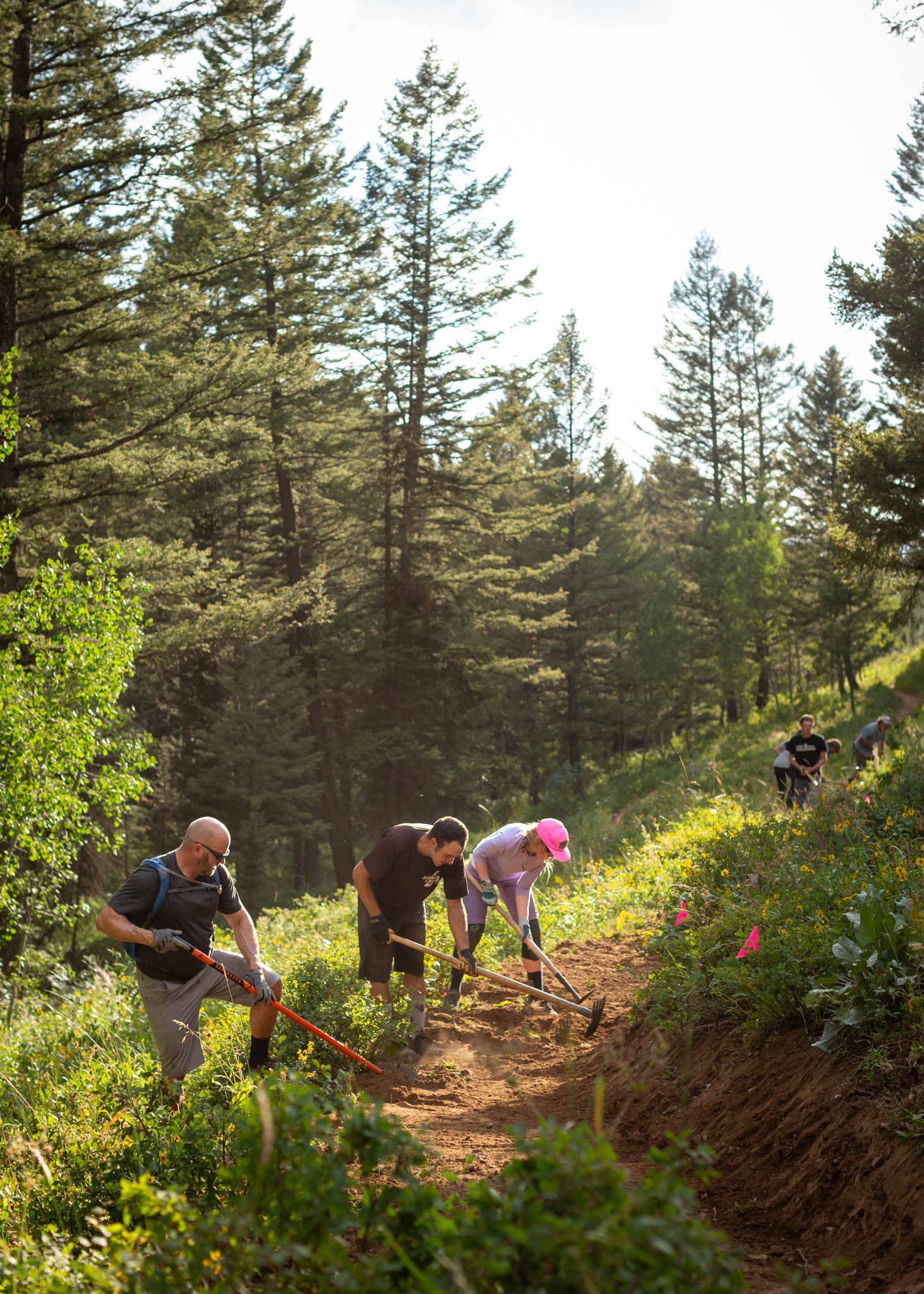Heralds of the Season
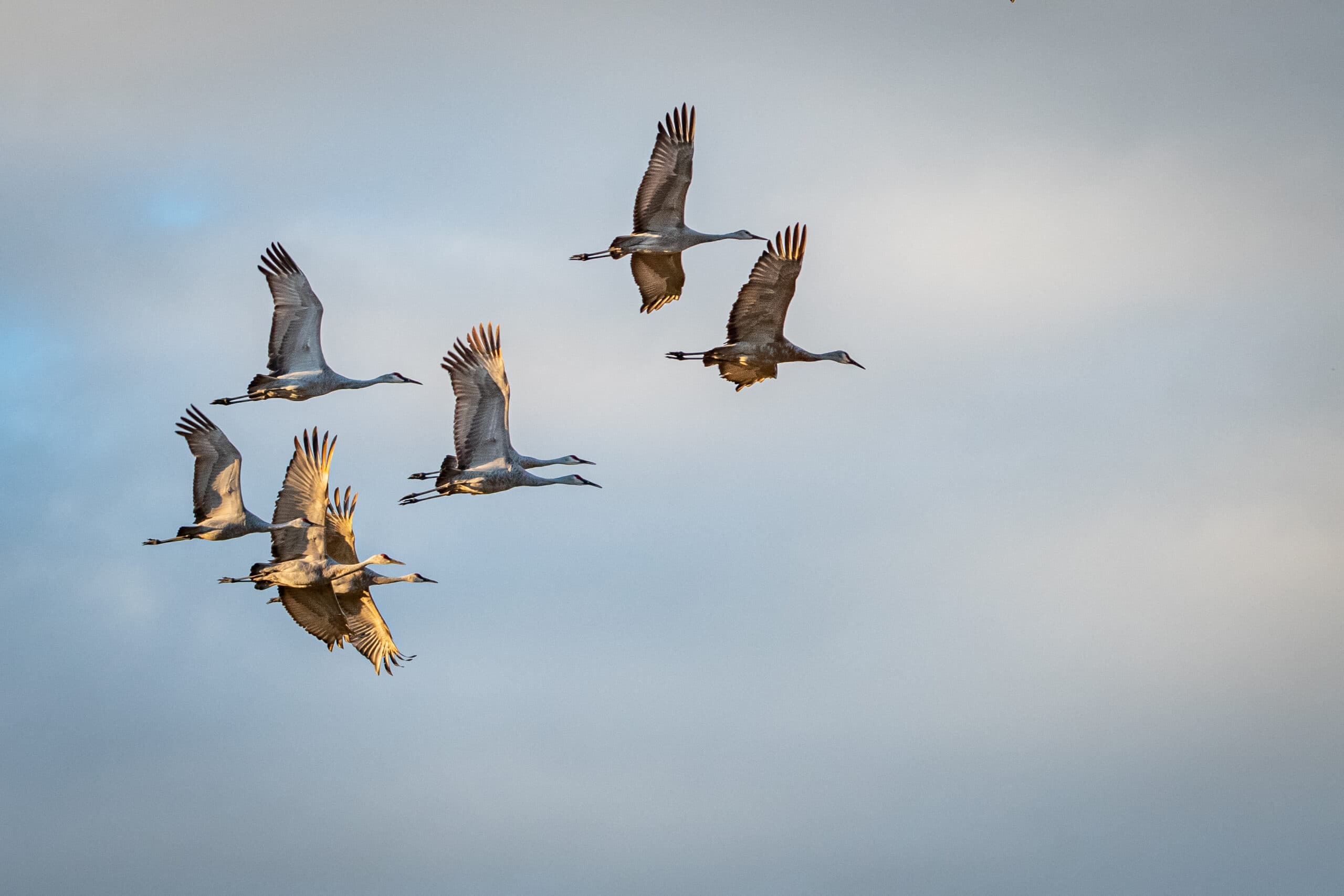
Sandhill Crane Festival marks bird’s fall gathering in Teton Valley
The sky was still dark when I pulled into the Teton Regional Land Trust’s parking lot.
The forecast was gloomy with 40-degree temperatures and rain, but the cozy office was bubbling with enthusiastic birders ready to see sandhill cranes. People had traveled from as far away as California and Chicago for an early morning tour to witness Teton Valley’s annual spectacle of migratory cranes visiting en masse, as they do each fall.
The tour is part of the annual Greater Yellowstone Crane Festival, which takes place in mid-September when the cranes congregate in the valley to forage and fuel up before continuing their journey south for the winter.
We loaded up in two vans with expert guides, traveling on the western side of the valley to spots where we could see the cranes. At one stop, Hilary Turner, our guide, counted nearly 250 cranes—and said the day before she had seen around 140. Hilary is the program coordinator for the Jackson Hole Wildlife Foundation, which partners with the Land Trust on numerous projects, including wildlife-friendly fencing and collecting wildlife data.
Each standing up to four feet tall with a seven-foot wingspan, the cranes are incredible to watch while they feed, and mesmerizing when they dance. We watched through binoculars and spotting scopes as pair after pair of the massive birds faced each other, flapping, leaping into the air, dipping, and stretching their wings. They bobbed their heads up and down as they danced, making their distinctive call as their movements flowed.
“They have that special kind of bugling call they make that we’ve all likely heard here in the valley at some point,” Hilary says. “That’s a really iconic sound, especially during fall migration.”
Our other guide for the morning was Michael Whitfield, a wildlife biologist who helped found the Teton Regional Land Trust in 1990 and went on to serve as the organization’s executive director for eighteen years. He is currently an elected official serving on the Teton County Board of County Commissioners.
“Their size and their flight and everything just entrances people,” Michael says. “If you think about cranes around the world, they’re considered in many places as sacred birds. That’s the case in Japan and a number of other places where different crane species are found.
“I think of them in that way for Teton Valley,” he says. “They are the heralds of the season. They tell us when it’s springtime and they tell us when it’s fall. The fall gathering, when they come here in big numbers on their pre-migration gathering, is almost like a holy event.”
Just as the leaves of aspen trees transform from summery green to autumnal golden, orange, and red, the cranes’ distinctive calls in the valley herald the change of seasons. We watched the sun peek through the clouds, and a rainbow shine across the sky, as the snow-capped peaks and golden fall foliage set a background for cranes and other wildlife. We spotted five moose, a coyote, and plenty of other birds, including a Swainson’s hawk, as we learned about the cranes, which stage in Teton Valley to eat their fill each fall before journeying south for the winter. They usually gather in the valley in September and remain until early October, feeding on grain to prepare. They might winter in Bosque del Apache National Wildlife Refuge in New Mexico, or southern Colorado, or a number of other locations in the southwest United States and Mexico. They can fly hundreds of miles in a day, moving through the sky at twenty-five to thirty-five miles per hour. Cranes also come to Teton Valley each spring, though generally in smaller numbers than in the fall.
Every night, sandhill cranes roost in shallow water like that along the Teton River, standing with their feet submerged so they can hear the splashing of any approaching predators, giving them a signal to escape. The birds can also cause conflict with farmers by eating their crops. In Eastern Idaho, they are hunted during the fall season, with nearly six hundred tags available in 2023.
Cranes are listed as a Species of Greatest Conservation Need in Idaho by the State Wildlife Action Plan of Idaho Fish and Game. In order to provide the cranes with food near their roosting sites, the Land Trust runs the “Grain for Cranes” program, which pays farmers to grow barley not to harvest, but for the cranes to eat. Working with partners, the Land Trust raises funds—including proceeds from the Greater Yellowstone Crane Festival—to subsidize grain fields in strategic areas within a mile or two of the cranes’ nighttime river roosts, before cutting them and letting them lay on the ground for the cranes’ benefit. Each year, the Land Trust aims to manage forty to sixty acres of grain for cranes in the valley, with each area carefully managed to comply with U.S. Fish and Wildlife Service regulations.
“There are not a whole lot of areas that have that kind of juxtaposition of grains on the ground close to roost sites that can support large numbers of birds,” says Mandy Crane, outreach and events coordinator for the Teton Regional Land Trust. “So, that’s why it’s so important in Teton Valley, and that’s why we try to protect those roost areas and grow more grains.”
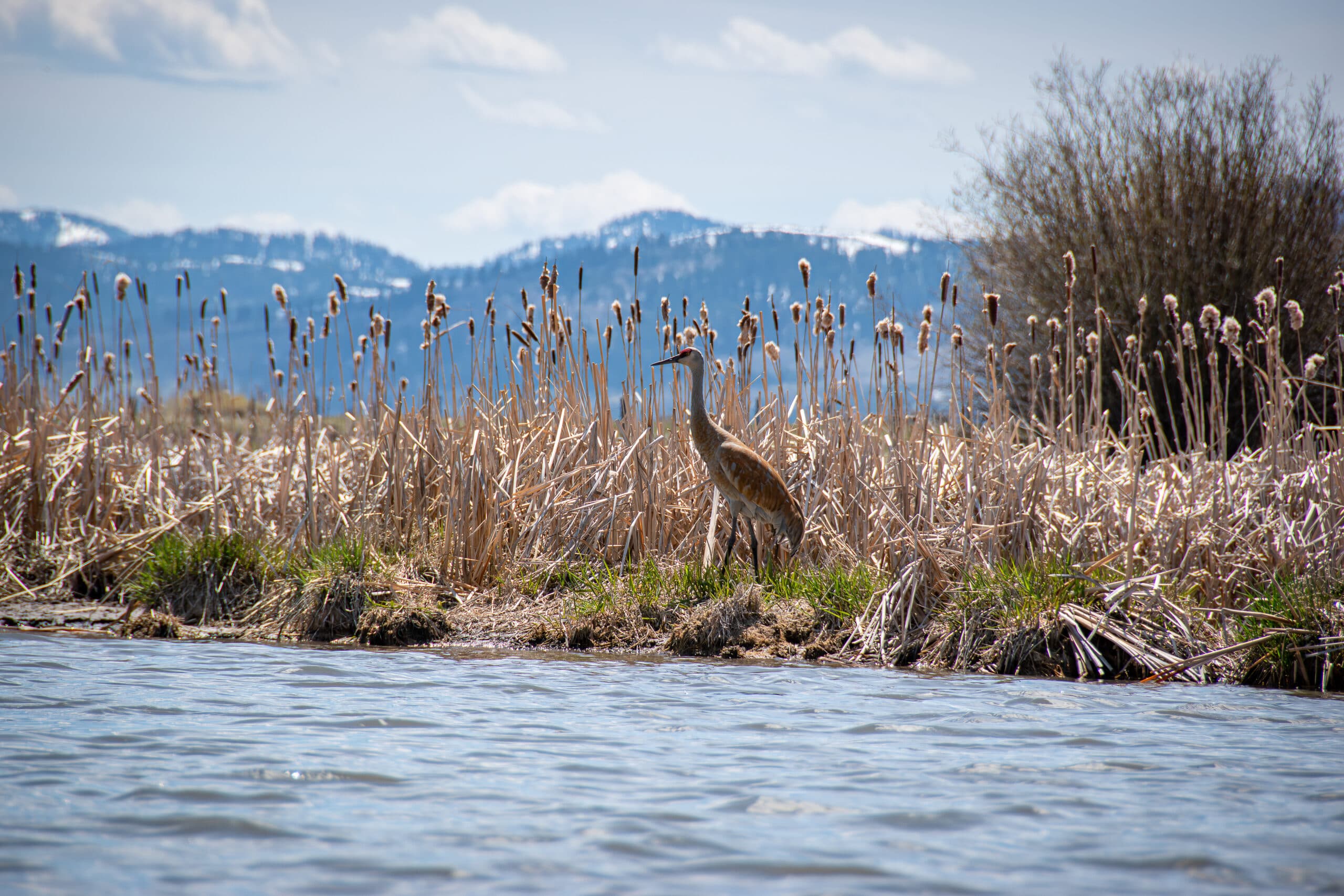
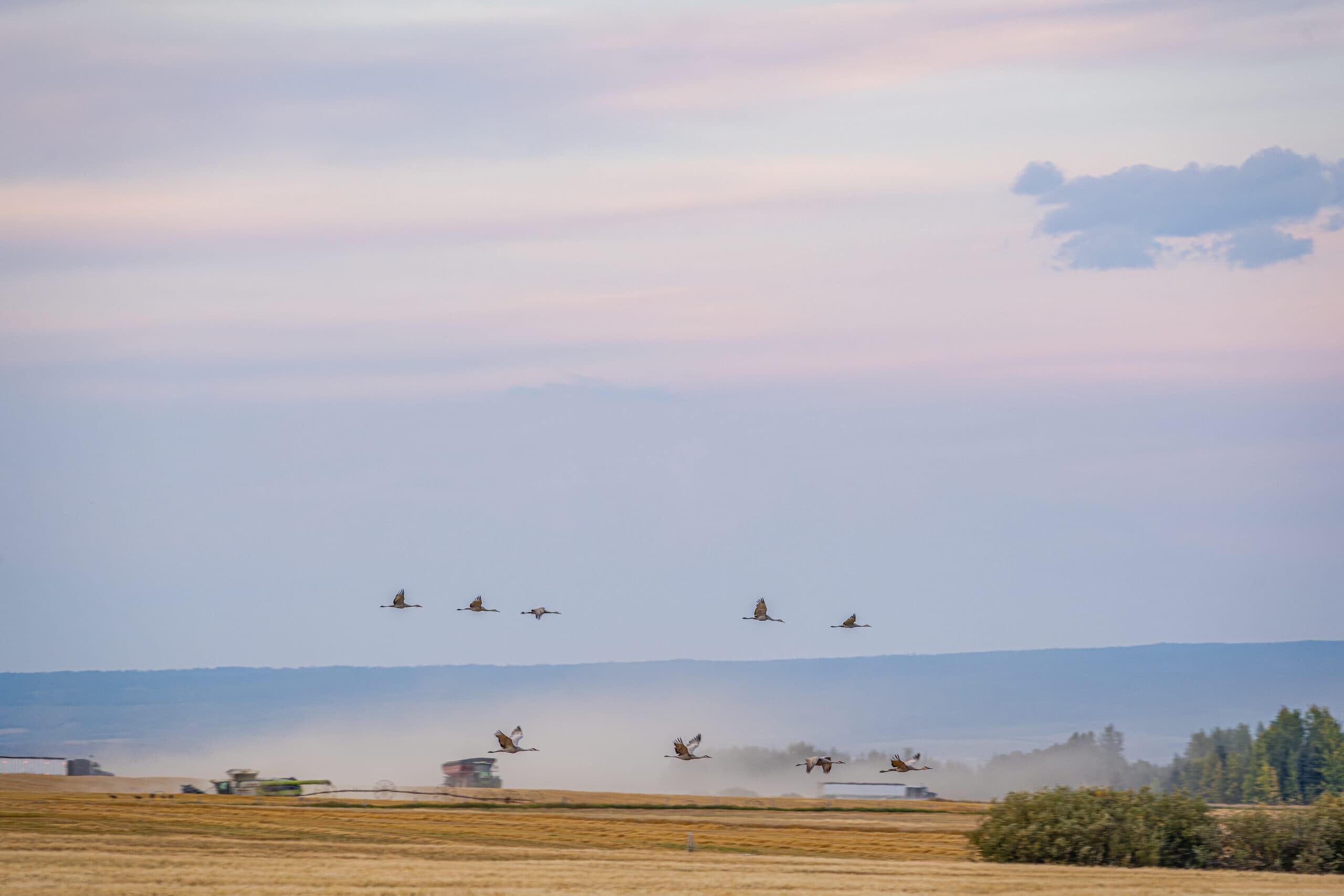


It is difficult to estimate the exact number of cranes that come through the valley each year, but the Land Trust says the U.S. Fish and Wildlife Service conducts an annual fall count by airplane for an area that includes Teton Basin. The average tally for this count has been around 1,175 cranes. Working with partners and volunteers, the Land Trust also conducts a ground count every year, and has averaged a peak fall count of 1,244 birds, though the organization emphasizes that these numbers are just a snapshot in time rather than a comprehensive count.
“Not a lot of other places have
these massive congregations like we have.
Going out and being able to see a couple hundred cranes foraging in a grain field
is a really cool thing.” Hilary Turner
Sandhill cranes can live between twenty and forty years, and many of the same cranes return each year. “They’re very long lived, and over the years, they learn where the special places are and return to them year after year,” Michael says. “One year I was watching cranes, it was in springtime, and there was a crane that had been marked when it was just a youngster coming off a nest, and I saw it when it was thirty-five years old. This bird has traveled thousands of miles, many thousands of miles, in its life during its annual migrations, but it always comes back to Teton Valley. That just speaks to me of what a special place we live in.” Michael was able to identify the bird, using a high-powered spotting scope, thanks to its unique leg band.
Cranes are slow to reproduce, with typically only one young—called a colt—surviving per year. “It’s important that we protect those long-lived birds and recognize that sensitivity,” Michael says.
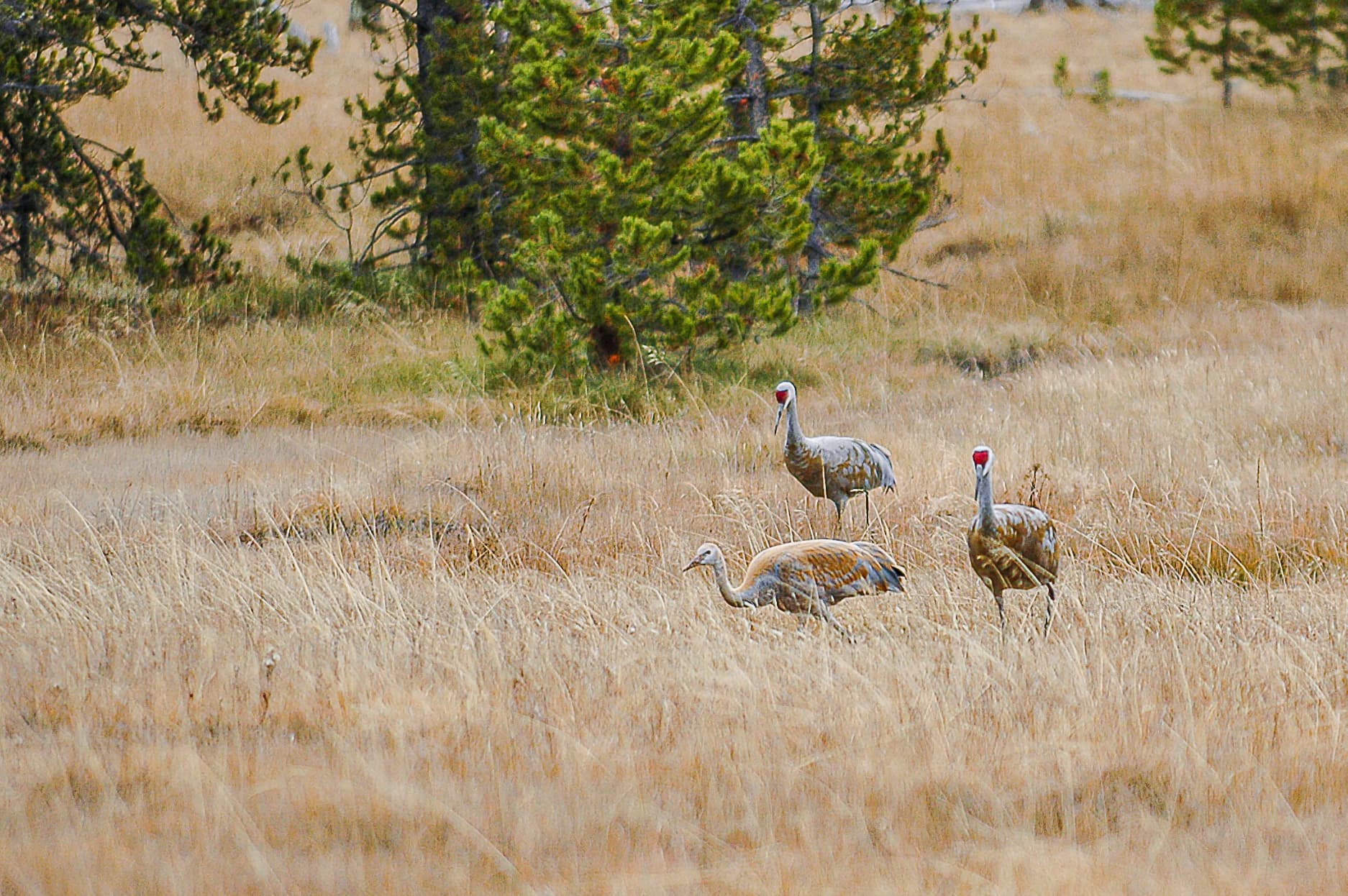
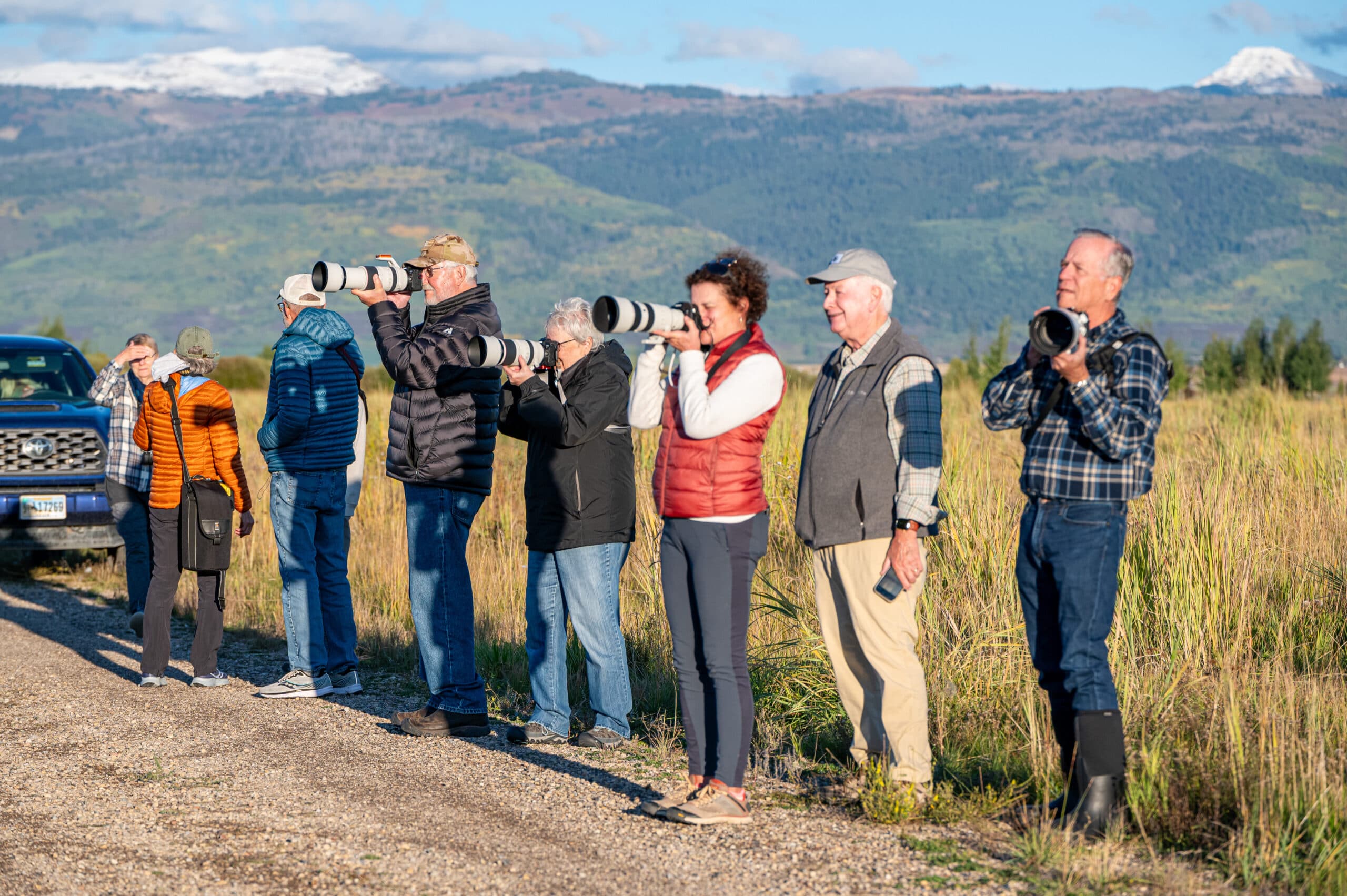
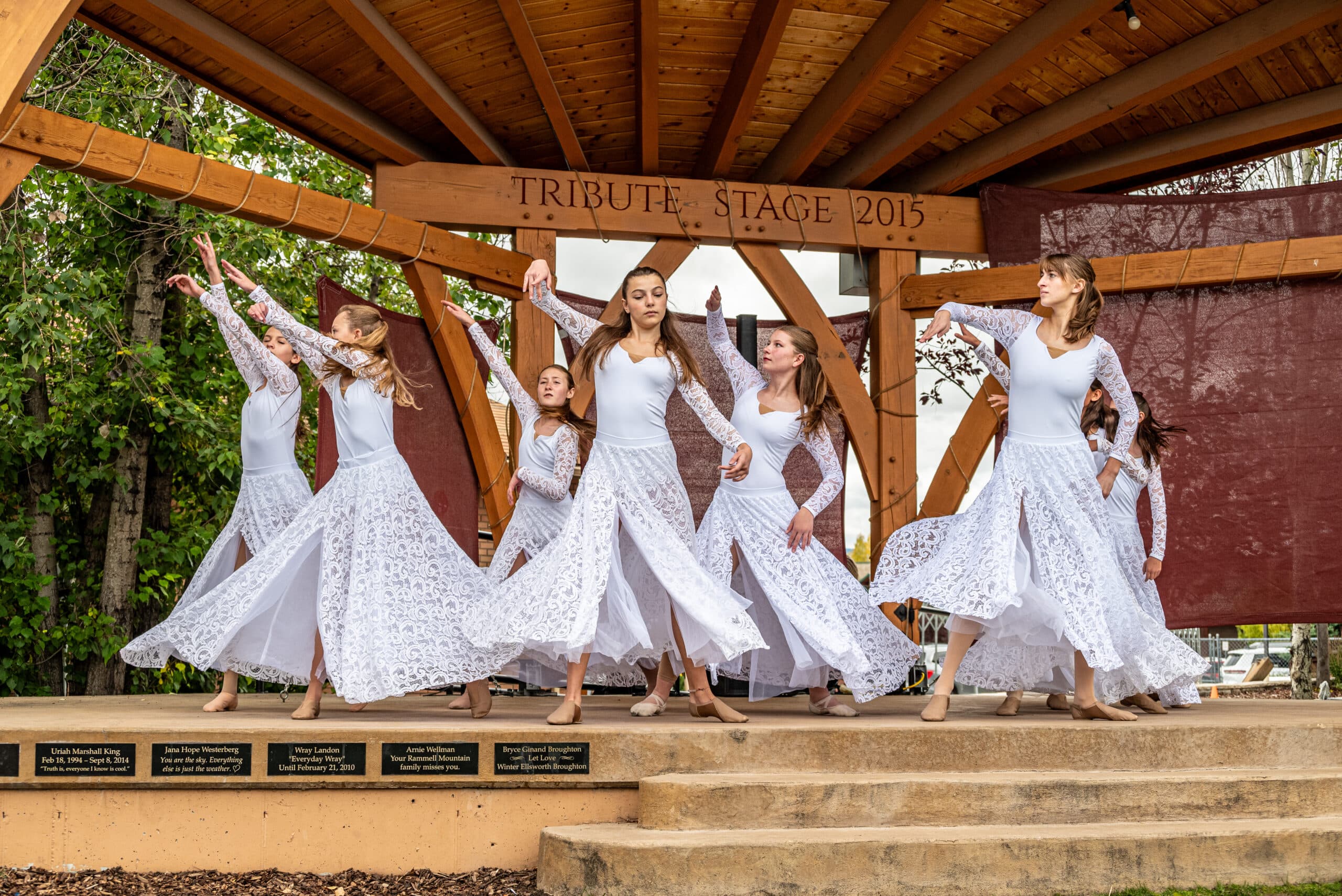
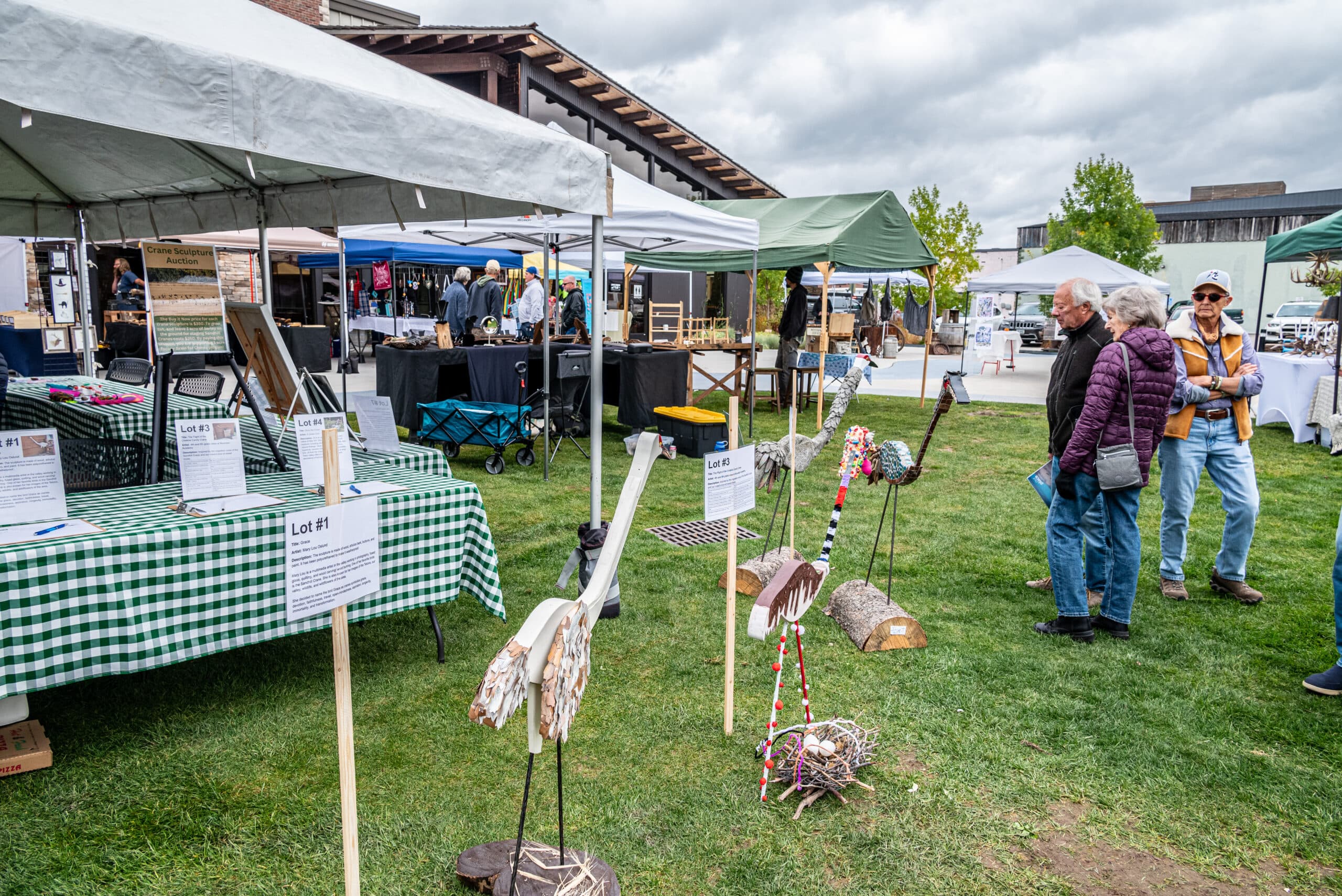
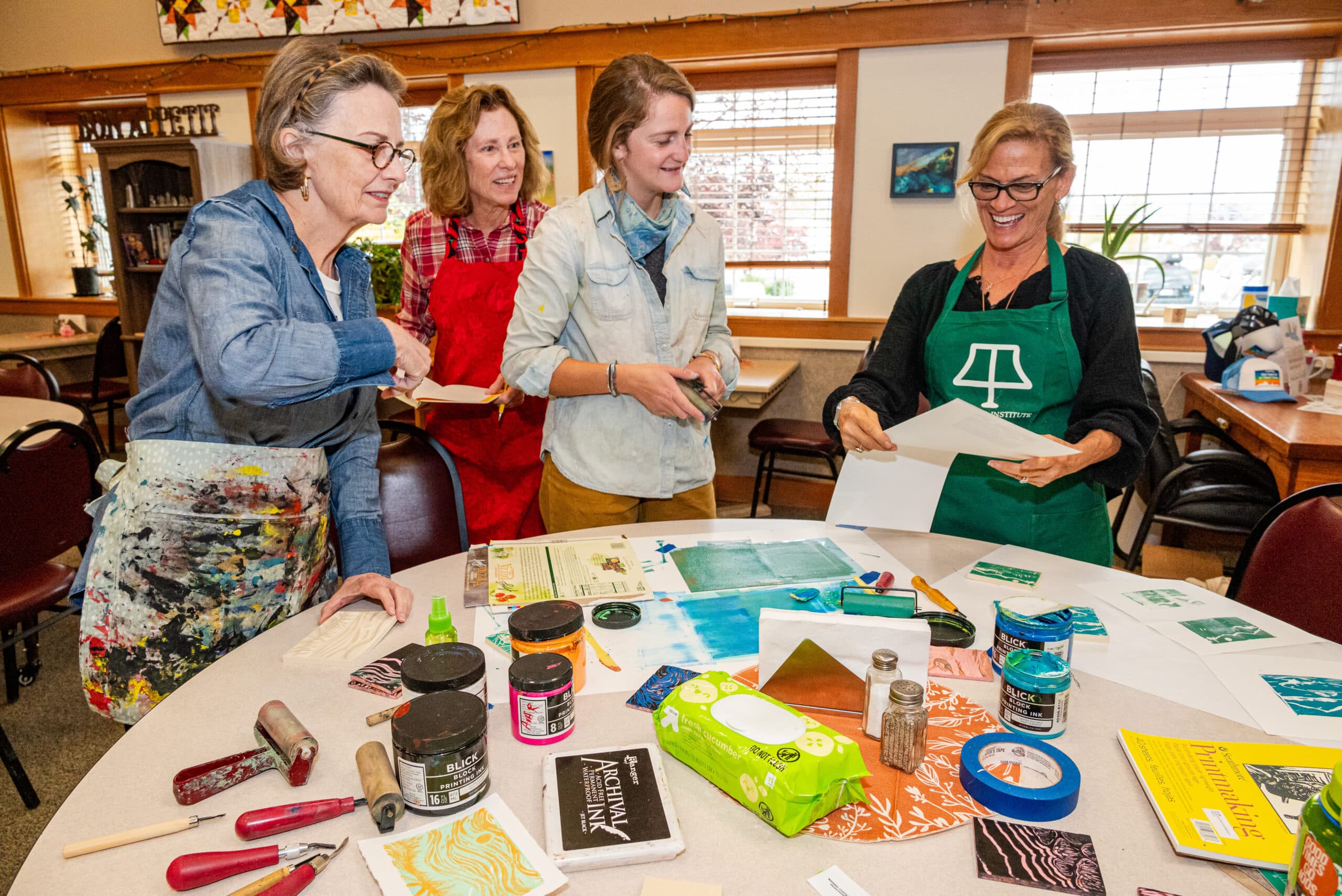
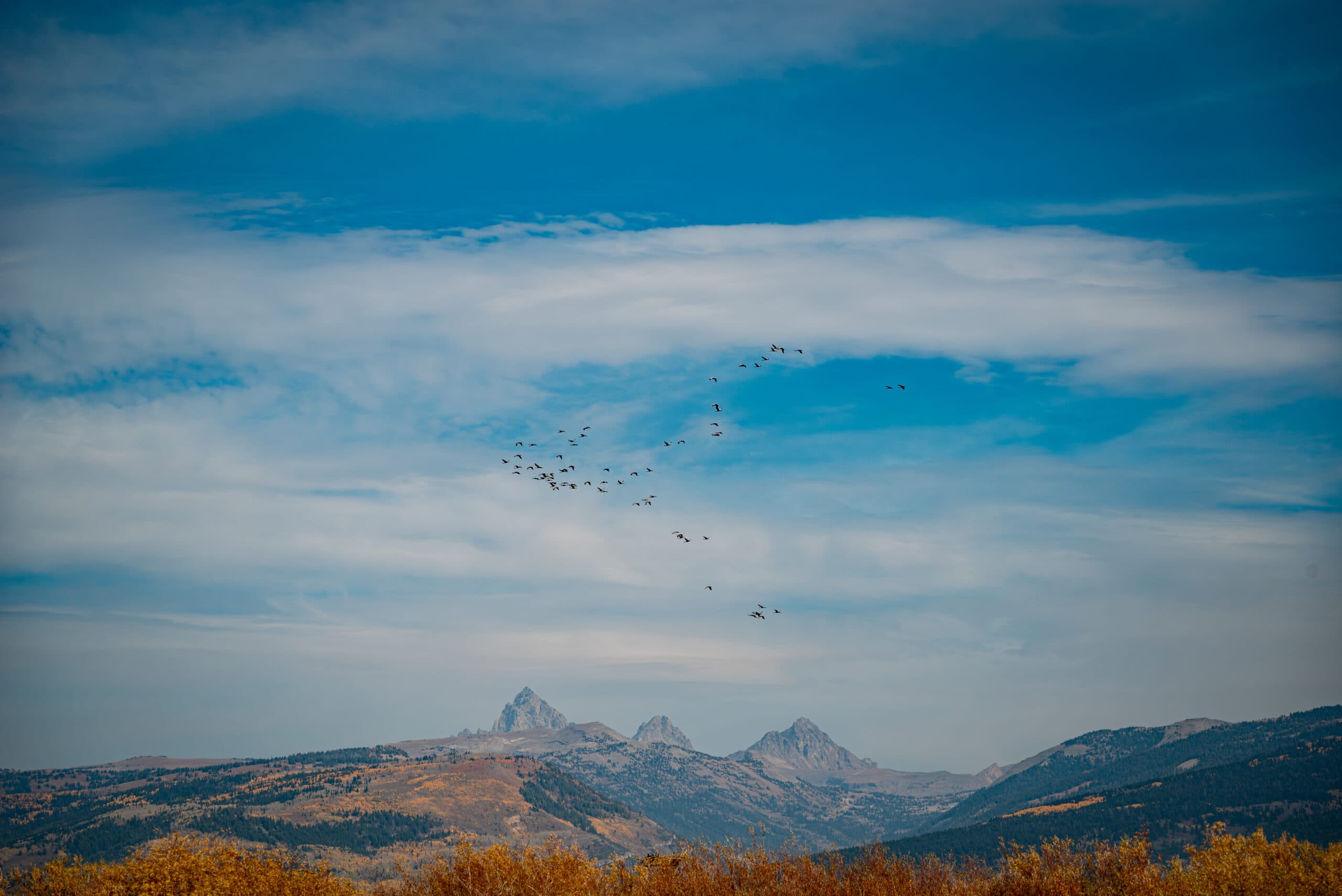
The 7th Annual Greater Yellowstone Crane Festival
In order to raise awareness of the birds and celebrate them, the seventh annual Greater Yellowstone Crane Festival will be held September 18 through 21. The annual celebration focuses on science and art, with proceeds going to help with local sandhill crane conservation.
In 2023, more than three-hundred-and-fifty people attended the festival’s numerous events, which included science-based talks, early morning crane tours, and a variety of art events, including a photography workshop with artist and photographer Linda Swope, and a crane-focused paint-and-sip evening with evening with Nicolette Maw at Wildlife Brewing. Other events included a storytelling evening at Highpoint Cider led by Valley Voices focusing on the theme of “migrations,” as well as a keynote speech by Daniel Collins, a migratory game bird biologist for the U.S. Fish and Wildlife Service in New Mexico—where many of the cranes spend their winter.
There was also a screening of the documentary Crane Song. The Saturday of the festival included an art fair with a variety of other artistic activities and workshops for kids and adults, including printmaking, poetry, dance, drawing, and an art auction.
“The real focus of the festival has always been this place where science and art can come together,” says Mandy. “It’s a blending of science-based talks and tours, along with a really big focus on crane art. We have always tried to incorporate dance and poetry and music and photography, and also sculptures, paintings, and drawings, to put it all together to create a festival that celebrates cranes through both art and science.”
The festival helps fund the Land Trust’s Greater Yellowstone Sandhill Crane Initiative, which aims to protect the cranes and their habitat. The Land Trust has been monitoring cranes in the valley since 2003. The initiative includes a variety of efforts, including partnerships, habitat protection, strategic resource enhancement, and community awareness—hence the festival.
“We wanted to have opportunities for people to see cranes and also to increase the community awareness of the number of cranes and how important Teton Valley is to the cranes of the Rocky Mountain population,” Mandy says.
Seeing the cranes passing through Teton Valley each year is an incredible sight—one that makes people work even harder to protect the species. Michael Whitfield recalls one of his most memorable crane encounters, which occurred more than forty years ago. He remembers the precise date: September 26, 1982. He was on top of Mount Baldy when he saw the cranes.
“All of a sudden here came all these waves of sandhill cranes starting their migrations, these big groups of noisy cranes,” he recalls. “They caught that little breeze from the north, and they were riding it to Colorado and right at my elevation at 10,000 feet. That was pretty cool.”

